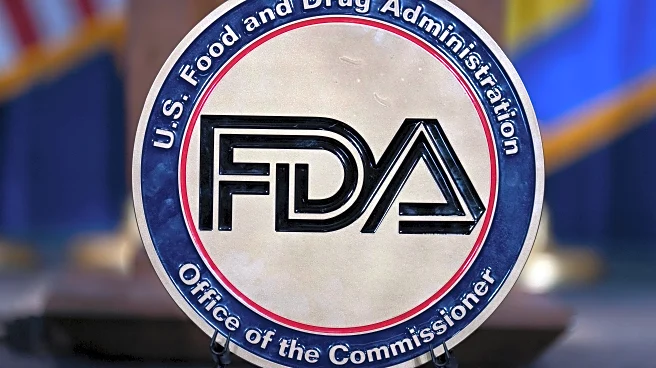What's Happening?
The FDA has initiated a crackdown on pharmaceutical advertisements, particularly targeting compounder drug ads that lack proper risk disclosures. This move comes after the agency sent out approximately 100 enforcement letters, including one to Hims & Hers for a Super Bowl ad promoting compounded GLP-1 medicines. These ads have been criticized for not adhering to the same stringent regulations as pharmaceutical companies, which are required to disclose risks and benefits. The issue stems from compounders being state-regulated, allowing them to bypass federal advertising standards. Experts argue that this loophole needs to be closed to prevent misleading advertisements that could endanger public health.
Why It's Important?
The FDA's action is significant as it addresses a regulatory gap that allows compounders to advertise without the same oversight as pharmaceutical companies. This could have broad implications for public health, as consumers may be misled about the safety and efficacy of compounded drugs. The crackdown could also impact the telehealth industry, which has similarly skirted regulations. By enforcing stricter advertising standards, the FDA aims to protect consumers and ensure that all drug advertisements provide accurate and comprehensive information. This move could lead to increased scrutiny and potential legal challenges from compounders and telehealth providers.
What's Next?
The FDA's recent actions suggest a potential expansion of its regulatory scope to include telehealth providers, which could lead to more enforcement actions against major players in the industry. This could prompt legal pushback as the agency broadens its authority. Additionally, there may be legislative efforts to subject compounders to the same advertising laws as drug manufacturers. The outcome of these regulatory and legal battles will shape the future landscape of pharmaceutical advertising and consumer protection.
Beyond the Headlines
The FDA's crackdown highlights the complex interplay between state and federal regulations, particularly in the pharmaceutical industry. The agency's actions could set a precedent for how compounders and telehealth providers are regulated in the future. This development also underscores the need for clear and consistent regulatory frameworks to ensure consumer safety and trust in the healthcare system.












